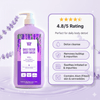Tranexamic Acid vs Niacinamide: What Works Best for Dark Spots?

Dark spots, those pesky reminders of sun exposure, acne, or changing hormones, are a stubborn problem for millions—especially for Indian skin, which is naturally prone to hyperpigmentation.
With so many brightening products flooding the market, two powerhouse ingredients rise above the rest: Tranexamic Acid and Niacinamide. If you’re feeling confused about which one to use—or whether you can combine both—this no-nonsense, deeply researched guide will clarify everything, so you can finally reclaim your naturally even glow.
What Causes Dark Spots, Anyway?
First, let’s bust the myth: no, you’re not “dirty” or “not taking care” if you have pigmentation.
Dark spots arise when your skin produces extra melanin—the pigment that gives your complexion its natural color—in response to:
-Sun exposure (UV and blue light)
-Previous pimples or blemishes (post-inflammatory hyperpigmentation)
-Hormonal changes (pregnancy, birth control, PCOS)
-Skin injuries, rashes (eczema, allergies)
-Aging and environmental stress
-Some medicines and skin procedures
For Indian skin, which is already on the spectrum of deeper tones, even mild inflammation can cause stubborn, long-lasting spots.
Meet the Contenders: Tranexamic Acid & Niacinamide
Before diving into the head-to-head comparison, let’s get to know the basics of each star ingredient.
Tranexamic Acid: The Melasma Master
Surprised to see an acid that started as a medicine for heavy bleeding? Tranexamic acid (TXA) is a synthetic derivative of the amino acid lysine. It first won fame in dermatology clinics, where specialists noticed it not only reduced irregular bleeding but also lightened melasma—a notoriously stubborn pigment disorder!

How Tranexamic Acid Fades Spots
-Inhibits Melanin Pathways: TXA blocks the molecules that signal your skin to produce excess melanin after trauma, UV, or inflammation.
-Disrupts Melasma Triggers: It calms skin’s response to hormones and sunlight, which are major causes of large, patchy pigmentation like melasma.
-Prevents Future Darkening: By “turning down” melanin production, TXA may stop new spots before they start.
Benefits at a Glance
-Fast-acting: Many see early improvement in 4-8 weeks
-Dermatologist-favorite for stubborn, deep dark spots & patchy melasma
-Well-tolerated by most skin types, even sensitive or acne-prone
-Mixes well with other brightening agents (niacinamide, kojic acid, vitamin C)
Did You Know?
TXA works on all skin tones but is especially effective for Indian and deeper complexions, who often struggle with resistant pigmentation. No wonder it’s taking over dermatology prescriptions and skincare shelves!
Niacinamide: The Barrier Booster & All-Star Brightener
Niacinamide (Vitamin B3) is having a serious moment—and for good reason. Called the “Swiss Army Knife” of skincare, it wears many hats:
How Niacinamide Works
-Reduces Pigment Transfer: It interferes with the process by which pigment (melanin) travels from melanocytes to skin cells.
-Boosts Skin Barrier: Strengthens your skin’s “wall,” trapping hydration inside and keeping irritants out.
-Reduces Oil, Blemishes, and Redness: Whether you have acne or just want to control shine, niacinamide keeps inflammation in check.
-Antioxidant Protection: Helps your skin handle environmental stress, pollution, and sun, preventing future spots.
Benefits at a Glance
-Fades generalized pigmentation, like post-acne marks or mild sunspots
-Calms redness, blotchiness, and irritation
-Regulates oil production (great for oily/combo skin)
-Easy to layer—minimal risk of irritation, even with higher concentrations (5-10%)
PRO-TIP
Want a routine that multitasks? Niacinamide works for brightening, anti-aging, oil control, and calming all at once!
How to Treat Body Hyperpigmentation: A Complete Guide for Even, Glowing Skin
Different Types of Dark Spots—Which Ingredient Fits Your Problem?
It’s tempting to just slap on “the strongest” brightener you can find, but not all pigmentation is the same. Let’s break down common dark spot types and see which ingredient acts fastest:
| Type of Pigmentation | Common Triggers | Appearance | Best Ingredient |
|---|---|---|---|
| Melasma | Hormones, sunlight, heat | Symmetrical brown/grey patches | Tranexamic Acid |
| PIH (Post-Acne Marks) | Pimples, injuries, rashes | Small brown/red-purple dots/patches | Niacinamide or Both |
| Sun Spots | UV damage, aging | Flat, uneven brown marks | Either, for prevention |
| General Uneven Tone | Pollution, stress, aging | Dull, patchy, sallow skin | Niacinamide |
Let’s get nerdy for a second! Both ingredients are star performers, but they operate via totally different pathways, making them ideal for different goals.
1. Speed of Fading
Tranexamic Acid: Quick; see improvement in 4-8 weeks, especially for melasma and persistent patches.
Niacinamide: Also effective, but best for diffuse blotchiness—works gradually, with visible changes usually in 4-12 weeks.
2. Strength
Tranexamic Acid: Especially good for deep, stubborn, or hormonally-driven pigmentation.
Niacinamide: Great all-rounder for superficial spots, acne marks, and maintenance.
3. Skin Barrier Impact
Tranexamic Acid: Tolerated by most, but can rarely irritate very sensitive skin (always patch test).
Niacinamide: Strengthens skin’s shield, soothes irritation, and combats inflammation.
4. Versatility
Tranexamic Acid: Best used in serums, spot treatments, or dermatologist-paired oral/topical combos.
Niacinamide: Available in serums, creams, masks…even cleansers! Nearly foolproof for layering.
5. Works With…
-Both play surprisingly well with others:
-Plus Vitamin C: For an antioxidant boost
-Plus Sunscreen: Essential! No point in brightening if you’re not blocking fresh damage
-With AHAs/BHAs: For gentle, controlled exfoliation alongside pigment reduction
Ingredient Comparison Table (For Quick Reference!)
Feature Tranexamic Acid Niacinamide
Primary Focus Deep, stubborn pigmentation, melasma Mild-to-moderate dark spots, redness, oil
Visible Results 4–8 weeks 4–12 weeks
Best For Hormonal & sun-induced melasma Post-acne marks, overall tone, irritation
Anti-inflammatory Mild Strong
Skin Compatibility Most skin types, esp. sensitive All skin types, highly tolerant
Side Effects Rare irritation Extremely rare, very gentle
Pregnancy Safe? Generally—but ask your doctor Yes
Combo Potential Niacinamide, vitamin C, kojic acid Retinol, AHAs, vitamin C, TXA
Added Perks Blocks melanin at its source Boosts barrier, fights pollution, soothes acne
Real Results: What Do Studies and Dermatologists Say?
On Tranexamic Acid:
Multiple clinical studies show up to 75% improvement in melasma within 8–12 weeks using topical or oral TXA.
Dermatologists often recommend TXA as a second-line for patients who didn’t respond to hydroquinone, especially for Indian, Southeast Asian, and Middle Eastern skin.
Works well with other depigmenting agents—combination therapy is the new norm.
On Niacinamide:
Proven in medical journals to fade post-inflammatory pigment (the brown or red marks after an acne breakout) as much as hydroquinone, with fewer side effects.
Strengthens skin’s natural moisture barrier, making it ideal for those with sensitive, dry, or compromised skin.
Reduces redness and acne, further minimizing the risk of more pigmentation.
Can You Use Tranexamic Acid and Niacinamide Together?
Absolutely—when paired, they deliver double the punch. Here’s how:
-Cumulative Effect: TXA blocks melanin production at the source; niacinamide stops excess transfers and heals skin.
-Minimal Irritation: Both have low irritation profiles, so layering is almost always safe.
-Routine-Friendly: Apply niacinamide first (water-based serums), then TXA (if thicker serum or cream), followed by moisturizer and sunscreen.
-Bonus: You’ll see improvement for not just dark spots but also for redness, dehydration, and even enlarged pores!
How to Layer Tranexamic Acid and Niacinamide in Your Routine
-Cleanse: Use a mild, non-stripping face wash.
-Tone (Optional): Hydrating or calming toners prep the skin.
Serums:
-Niacinamide Serum—5–10% can be used morning and night, right after toning.
-Tranexamic Acid Serum or Cream—Follow, especially at night for deeper penetration.
-Moisturize: Lock in active ingredients with a gentle, fragrance-free moisturizer.
-Sunscreen (AM!): Don’t skip. SPF50+ every morning, rain or shine.
-Weekly Exfoliation: Gentle AHA/BHA mask boosts absorption, but don’t overdo it (1–2 times a week).

7% AHA BHA Glycolic Acid Exfoliating Peeling Face Serum - Great for Beginners
Tip: Always patch test new actives on your jaw or behind your ear before fully introducing to your face.
Meet The Brightening Heroes: Tranexamic Acid vs. Niacinamide
🌟 Tranexamic Acid: The Ultimate Dark Spot Specialist
-
Blocks the process that tells your skin to overproduce pigment (melanin).
-
Used by dermatologists for tough cases of melasma and stubborn pigmentation.
-
Delivers visible results in as little as 4-8 weeks when used consistently.
Why We Love It:
-
Great for stubborn, deep dark patches (think: melasma, sun-induced spots).
-
Minimal irritation—gentle enough for sensitive skin.
-
Works well in synergy with other brighteners.
Wild Oak Recommends:
-Wild Oak Tranexamic Acid + Kojic Serum

2% Kojic Centella Face Serum with Licorice for Dark Spots & Hyperpigmentation
An advanced formula that pairs tranexamic acid with kojic acid and niacinamide for triple-action spot correction. Use nightly after cleansing for best results.
🌈 Niacinamide: The Multitasking Glow Booster
-
Also known as Vitamin B3—safe, gentle, and powerhouse versatile!
-
Reduces pigment transfer, redness, AND fortifies the skin’s natural barrier.
-
Fades acne marks and general unevenness with consistent use.
Benefits Include:
-
Visibly brightens dull, uneven skin.
-
Calms inflammation and controls excess oil.
-
Suitable for all skin types (dry, oily, sensitive, or combo).
Wild Oak Pick:
-
Wild Oak 10% Niacinamide + Zinc Serum
Lightweight and non-sticky, this serum fights spots, congestion, and supports healthy skin function. Your fuss-free daily serum—works AM or PM!
ting!).
Beyond Creams: Lifestyle Tips That Maximize Results
-Wear Sunscreen Daily. Even the best actives can’t keep up if you’re unprotected against daylight.
-Eat Antioxidant-Rich Foods: Berries, green tea, citrus—fuel your skin’s repair.
-Manage Stress: High cortisol drives inflammation and melanin.
-Don’t Pick Pimples: Every squeeze or scratch can leave a fresh dark spot.
-Hydrate and Sleep: Both speed up skin renewal.
Lifestyle Tips For Fading Dark Spots Faster 🌱
-Wear SPF 50+ every single day—no exceptions!
-Eat colorful, antioxidant-rich foods.
-Don’t pick or squeeze pimples (we know it’s hard).
-Manage stress—meditation, yoga, or a little self-care treat.
-Hydrate, hydrate, hydrate!
The Bottom Line: Who Wins—Tranexamic Acid or Niacinamide?
Tranexamic Acid shines for persistent, patchy, or hormonal pigment (think: stubborn melasma, sun patches).
Niacinamide is your go-to for mild-to-moderate dark marks, redness, oiliness, and overall tone reset.
For most Indian skin, combining both amplifies your brightening results—giving you the confidence to step out foundation-free.





